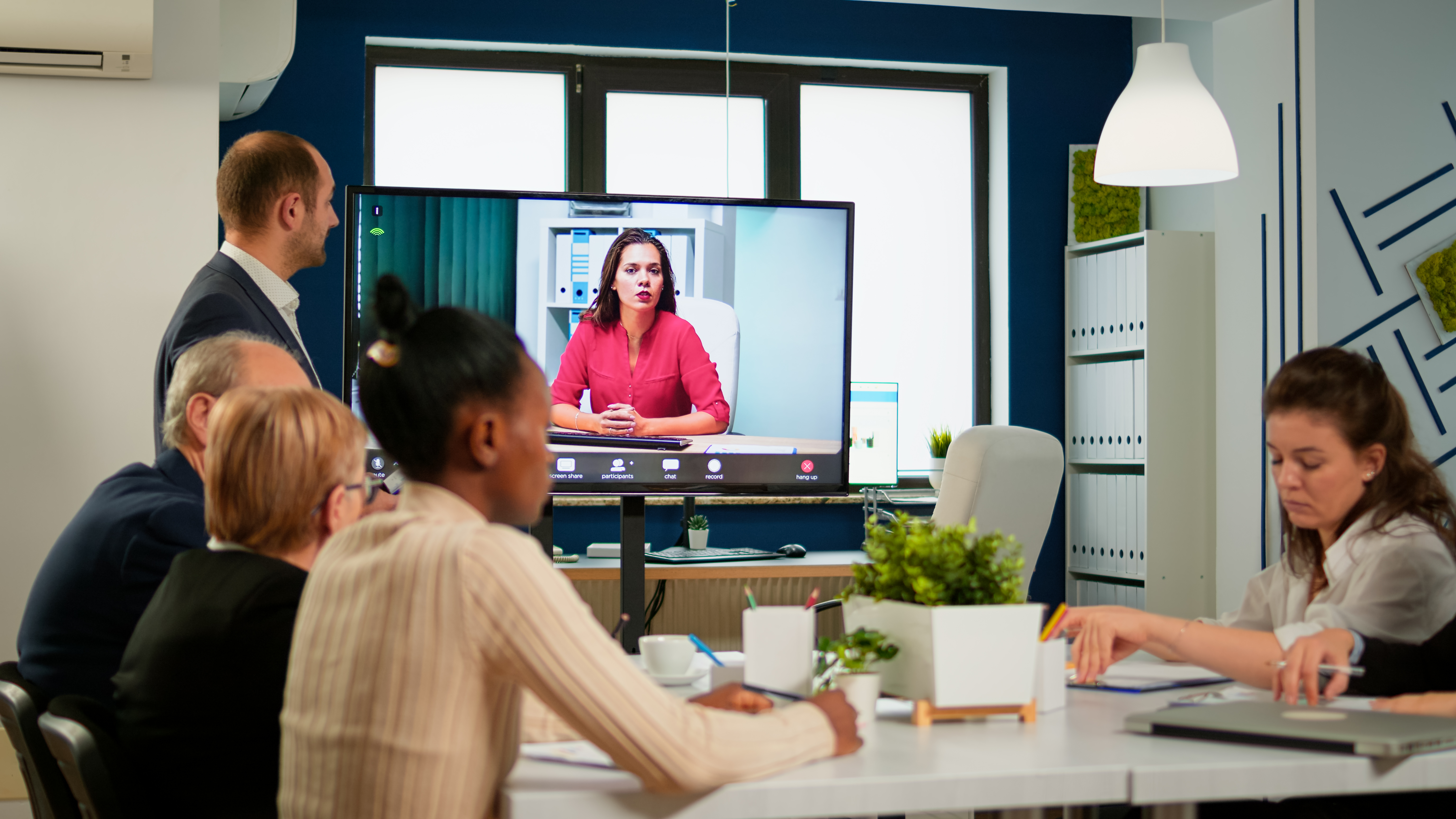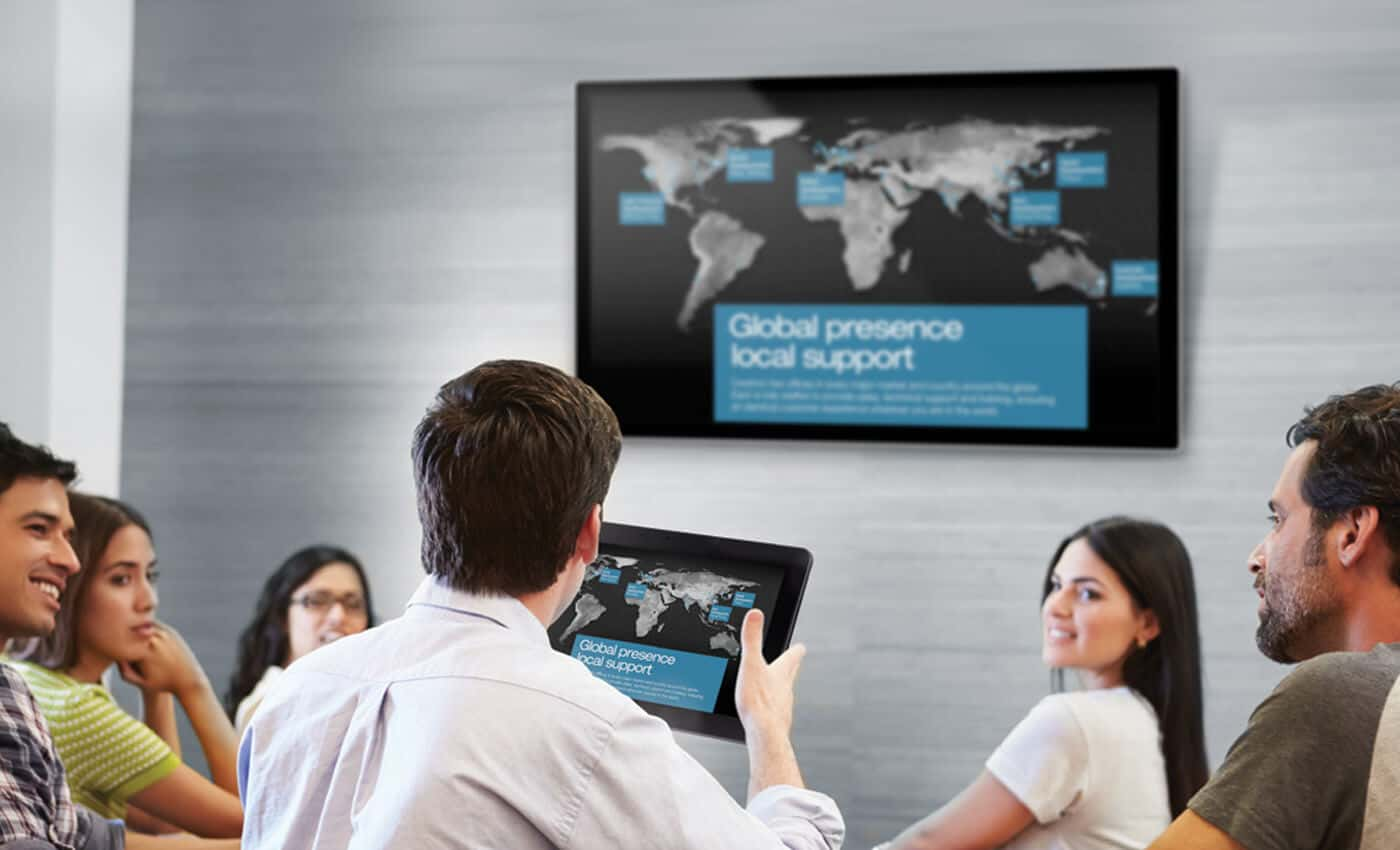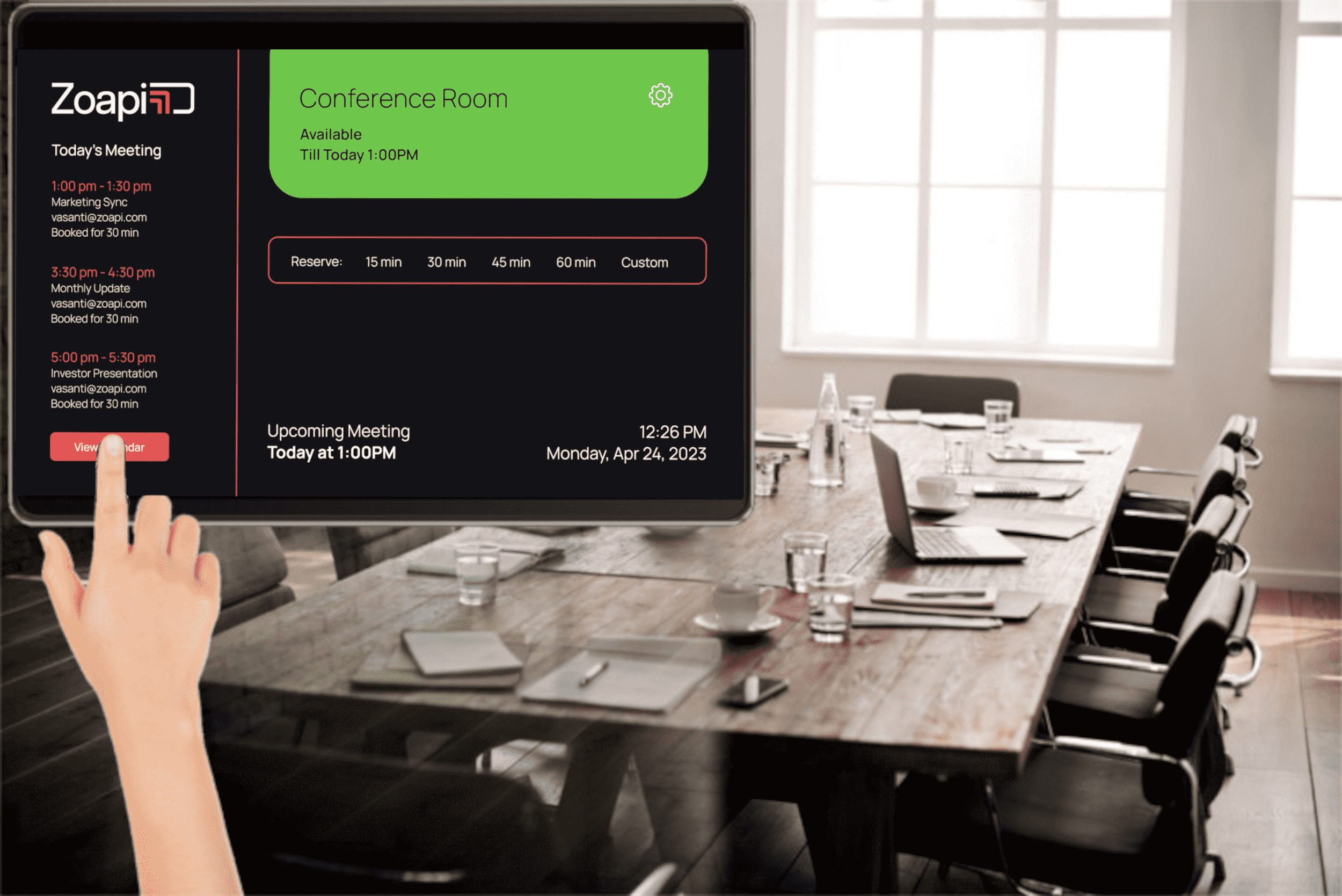
What is Conference Room Technology? : Know Types and It’s Importance
Productive meetings are yielded by well-planned and quality technology. In the past few years, a large number of small and medium-sized companies have adopted smart conference room solutions to streamline meetings and enhance staff collaboration. In fact, the global market for conference room solutions is expected to generate US$ 6,068.1 million by 2033, which is a high surge compared to the revenue collected in 2023, i.e. US$ 1,521.9 million.
Having said that, if you are planning to adopt conference room technology in your business, this article has got you covered. This guide lists a thorough overview of the technologies and equipment that IT and facilities managers should consider while installing conference room systems.
What is Conference Room Technology?
Conference rooms are defined as gathering spaces for entrepreneurs to collaborate on projects, exchange ideas, hold meetings with leads and clients, or conduct training sessions with employees.
On the other hand, conference room technology indicates the adoption of advanced technologies in the room to increase workforce productivity. An ideal conference room technology can boost employee and business performance through enhanced networking, productivity, and collaboration.
Why Investing in Conference Room Technology Matters?
The advantages of investing in conference room technology outweigh any possible hassle, as does the expense of doing nothing. Below are the top 3 reasons why investing in conference room technology matters.
1. Productivity
When remote employees cannot participate virtually in a crucial team meeting that takes place in the office, it affects the organization. Because they are unable to benefit from the value of shared input and communicate transparently, both (in-office and remote employees) become less productive. In other words, your organization yields less output because it fails to provide a smooth, flexible work option (hybrid/remote).
2. Seamless Collaboration
People experience a second-class meeting experience if they join remotely and are unable to see or hear other attendees clearly in the meeting due to inadequate cameras or subpar conference room technology. Inadequate technology for virtual meetings and conference room equipment disrupts everybody’s work, thereby hindering a seamless collaboration.
3. Room Scheduling
Simplifying and streamlining the conference room reservation process is important. When you don’t have reliable, user-friendly room scheduling software, you waste a significant amount of time besides doing multiple reservations. Moreover, you may commit other scheduling mistakes as well which can leave the attendees uninformed regarding any changes to the venue, agenda, or time of the meeting.
What Are the Types of Conference Room Technologies?
In easier terms, users should be able to text, call, share files, and hold conferences from any device using conference room technology. Below are a few of the key components of conference room systems. Incorporating them will help you increase productivity.
1. Digital White Boards
Using interactive whiteboards, participants at the meetings can share presentations, documents, notes, annotations, and images while interacting with other users. Teams can also use digital whiteboards to brainstorm ideas and visualize them together through interactive displays or screens.
2. Wireless Presentation
While sharing slides, you can definitely use an HDMI cable. However, it can cause several problems because HDMIs are limited to connecting to computers natively; they cannot be used with phones or tablets. This is why smart conference rooms have a wireless presentation solution. Every conference attendee should be able to connect their device using the native screen sharing or a screen sharing app on a wireless system.

3. Conference Room Booking Systems
Conference rooms have become a hub of confusion lately. While some are dreadfully underutilized, others are in high demand and remain booked very often. Hence, with conference room booking systems, you can keep track of your room inventory in real-time and ensure that the organizers of the meeting are aware of which rooms are available. This allows for precise and efficient booking, thus eliminating the confusion or tedious work of booking over and over again.
4. Meeting Room Display
Meeting room displays show real-time agenda and room availability. These interactive displays are excellent for navigation within corporate surroundings and buildings because they allow the attendees of the meeting, including outside visitors (such as vendors or possible investors), to quickly analyze if they are in the correct or wrong area.
5. High-Quality Webcams
Businesses have come a long way today. For example, a video conferencing system for conference rooms or a high-quality webcam has become one of the important components of smart conference rooms. In fact, many businesses invest in advanced webcams that feature 4k HD cameras. They provide wide-angle, high-quality, and flexible viewpoints for enhanced interactions and in-person meetings.

6. Speakers & Microphones
Regardless of the design of the room, sound quality is unquestionably essential. While some conference rooms, perhaps smaller ones, should prioritize noise-cancelling technology and small on-the-desk speakers, larger conference rooms will benefit from ceiling-mounted microphones and speakers. All this improves productivity and boosts collaboration besides providing a more immersive experience.
7. Projectors
A TV screen isn’t enough sometimes. If you have a large conference room, go for a projector that allows everyone in the room to see clearly what is happening. Although projectors aren’t always known for their high quality, there are several really good models with 4K image quality available in the market.

Conclusion
With such advancements in technology, it is no secret that work in the future may be hybrid or entirely remote. Additionally, with time, multinational businesses and organizations may also begin to face collaboration issues as more employees start working from different locations. Considering all this, it is important to realize the potential of conference room technology because this can be the most important component of the collaboration puzzle in the future.
Frequently Asked Questions
What technology do you need in a conference room?
A conference room should have a list of technologies. However, some of the essentials include digital whiteboards, screens, audio-visual systems, projectors, and video conferencing equipment.
What is a conference-style room setup?
A conference-style room arrangement usually consists of a large table surrounded by seats/chairs and smart technologies to facilitate transparent interaction and cooperation between the individuals.
What is the purpose of a conference room?
Conference rooms are designated areas for meetings, brainstorming sessions, presentations, discussions, and decision-making. Bringing all the individuals together, a conference room improves productivity and enhances communication within businesses.




